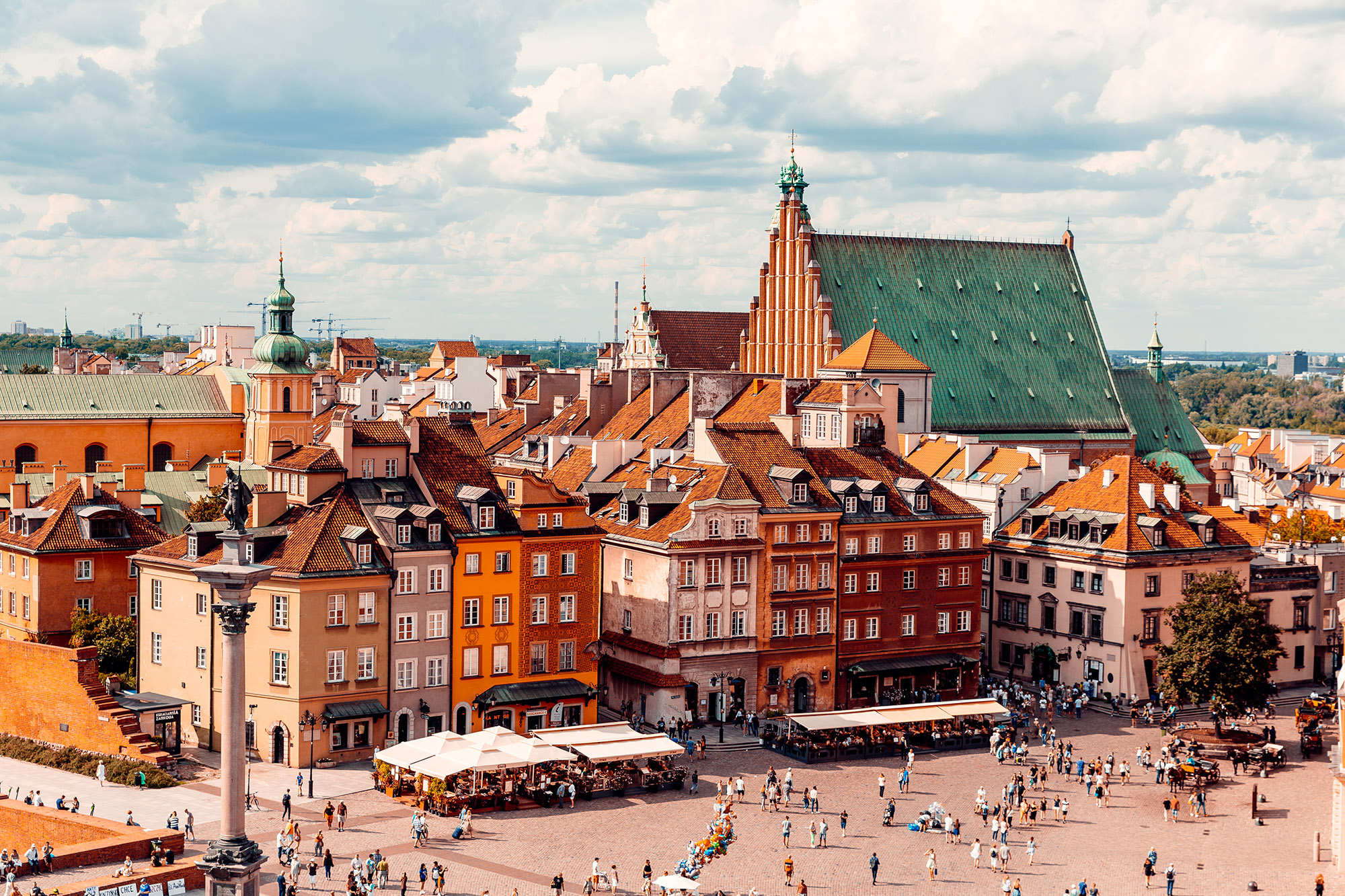For many years, despite being Poland’s capital, Warsaw shrunk in the shadow of Krakow’s spectacular town square and soaring medieval towers. By comparison, Warsaw was often seen as drab and workaday, with a skyline dominated by a Soviet monolith. But in the past decade or so, big changes have been happening.
Now, Warsaw is Poland’s capital of cool. New museums have transformed the tourist landscape, and innovative (and delicious) bars and restaurants have made this city of almost 2 million a culinary magnet for mixologists and chefs. Now, 24 hours isn’t even close to enough time to see all of the main attractions. But with this guide, we’re going to do our very best.

Arrival
Warsaw’s Chopin Airport (WAW) is by far the busiest in the country. Named for the 19th-century Romantic composer and pianist Frederic Chopin, it’s the hub for the national flag carrier. LOT Polish Airlines connects the city to the whole world, with nonstop flights to European capitals, as well as far-flung places such as Mumbai and Tokyo. Plus, it also links to a number of North American cities, including New York, Miami, Toronto, and Los Angeles.Morning
Start in the heart of it all. In this case, the best public transit option to get to Castle Square in Old Town is the bus. The trip takes about 45 minutes. Then walk right onto the cobblestones.Warsaw’s historic core dates back to the 1200s. When you arrive, check out Sigismund’s Column, which dominates Castle Square. If the breakfast on the plane was a little light, enjoy an extravagant morning meal at Restaurant Literatka, right there on the square. Fuel up for a busy day on staples such as scrambled eggs, ham, and crispy bacon. Served up in a stylish space, with views to the Vistula River.

Also, don’t skip the parliamentary chambers, including the senate hall. This was where legislators of the Polish-Lithuanian Commonwealth signed the Constitution of 1791. This was the first modern democratic constitution in Europe. It promoted freedom, equality, and religious tolerance, and it created a constitutional monarchy.


If there’s time, you could quickly swing through the porcelain gallery, as well as an art gallery with 600 exhibits, including a couple of Rembrandts. But definitely get back outside into the sun, so you can wander around Old Town. The reconstruction is so complete and perfect that you would honestly never know that more than 85 percent of it was razed by German soldiers.

Afternoon
Make your way to Milk Bar. From Old Town Square, it’s only 20 minutes on foot (or eight minutes by taxi or Uber). A throwback lunch awaits.During the darkest days of Polish communism, bar mleczny (milk bars) served up bland, super-cheap meals to the masses. A guide once shared with me that these cafeterias were so low-rent, the knives and forks were tethered to the tables with strings.


The two best museums in Warsaw (in my opinion) now remain for the rest of the afternoon. In an ideal world, you could visit both—and maybe you can.
Option one, a few miles to the west: Opened on the 60th anniversary of the Warsaw Uprising, the Warsaw Rising Museum commemorates and brings to life that heroic but ultimately tragic event. In the summer of 1944, the Polish resistance made a massive push, fighting German occupation to establish a free and independent capital. Many thousands died, including as many as 250,000 civilians, and the vast majority of the city was destroyed.
The museum is really worthwhile. The permanent exhibition recreates the uprising in dramatic detail. Reconstructed scenes, historical objects, and some 1,500 films, photos, and sound recordings tell the story—one you’ll never forget.
On the other hand—or, ideally, after you’ve visited the Rising—head back east. Cross the Vistula, into the resurgent neighborhood of Praga, once a tough place, now gentrified and home to patio cafes and cool boutiques. And arrive at the Polish Vodka Museum.
Now, this place is a lot of fun. It is the only museum of its kind in the world (dedicated to Polish vodka). It is located in a handsome brick building that once produced the country’s best-known vodkas. Inside, let a guide take you through the history of the national beverage (vodka actually means “little water” in Polish).

Evening
Close the loop, back across the Vistula, to the square around the Polish National Opera. Start by toasting an amazing day with a celebratory drink at The Roots, one of the finest cocktail bars in the country. It’s been recognized by The World’s 50 Best Bars.The master mixologists here are always doing innovative things, especially with vodka and fresh, local ingredients. If you ask nicely, they’ll show you their own small vodka museum. It includes vintage coolers, shakers, and jiggers, as well as first-edition bartending manuals.














